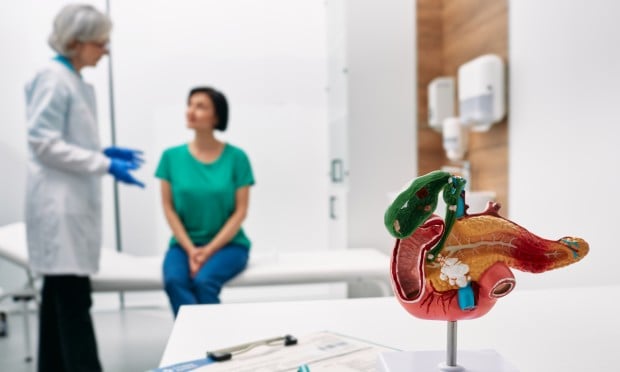 While poverty was actuallyassociated with lower rates of cancer mortality prior to the 1980s,that trend has since reversed, due in part to changes in diet andsmoking as well as screening and treatment rates. (Photo:Shutterstock)
While poverty was actuallyassociated with lower rates of cancer mortality prior to the 1980s,that trend has since reversed, due in part to changes in diet andsmoking as well as screening and treatment rates. (Photo:Shutterstock)
The good news is that cancer in America was beaten back over the 25years ending 2016, with death rates plummeting, particularly whenit comes to the four most common types of the dreadedaffliction.
|There's a caveat, however. Those gains have been reaped mostlyby the well-off. While racial disparities have begun to narrow, theimpact of limited access to treatment for the poorest Americanshas increased wealth-based inequality, according to the AmericanCancer Society's annual update on trends and statistics.
|“Any time you have a disease as serious as cancer, when you havea substantial reduction in deaths, that's a notable achievement,”said Len Lichtenfeld, the interim chief medical officer for theAmerican Cancer Society. “But there are still a lot of areas forimprovement.”
|Related: Cancer care challenges employers, health planbudgets
|Health insurance and access to care can be an issue in some poor andrural portions of the country, where there are higher death ratesof colon, cervical and lung cancers, according to Cancer Statistics 2019. While poverty wasactually associated with lower rates of cancer mortality prior tothe 1980s, that trend has since reversed, due in part to changes indiet and smoking as well as screening and treatment rates, thehealth organization said.
| There will be an estimated 1.8million new U.S. cases of cancer diagnosed in 2019, with 606,880Americans expected to die from the disease, according to CancerStatistics. With the overall death rate declining by 1 percent to 2percent annually between 1991 and 2016, the most recent yearavailable, the nation has avoided about 2.6 million deaths overthat period, the group found. There are some approaches that can beeasily implemented to further reduce cancer death rates, such asbetter screening, Lichtenfeld said. He was particularly struck bythe fact that nine women aged 20 to 39 die each week from cervicalcancer in the U.S., despite the fact that Merck & Co.'sGardasil vaccine can prevent it from forming.
There will be an estimated 1.8million new U.S. cases of cancer diagnosed in 2019, with 606,880Americans expected to die from the disease, according to CancerStatistics. With the overall death rate declining by 1 percent to 2percent annually between 1991 and 2016, the most recent yearavailable, the nation has avoided about 2.6 million deaths overthat period, the group found. There are some approaches that can beeasily implemented to further reduce cancer death rates, such asbetter screening, Lichtenfeld said. He was particularly struck bythe fact that nine women aged 20 to 39 die each week from cervicalcancer in the U.S., despite the fact that Merck & Co.'sGardasil vaccine can prevent it from forming.
“Losing nine young women every week to a disease that for themost part is preventable is something we need to pay attention to,”he said.
|The run of good news isn't likely to ebb any time soon,Lichenfeld said. The reductions seen since 1991 don't include mostof the benefit from recent medical advances, such as drugs likeBristol-Myers Squibb Co.'s Opdivo and Merck's Keytruda, which helpthe human immune system attack tumors.
|“A lot of what we see here is because of public healthinitiatives like smoking cessation and early screening,” he said.“We haven't begun to see the impact of the changes that areoccurring as we speak in the care of people with cancer.”
|“We are on the right path. We still have a long way to go, butsome of it is fundamental blocking and tackling,” Lichenfeld said.As always, he added, diet, exercise, screening and access toeffective treatments are the main weapons against the disease.
|Read more:
Complete your profile to continue reading and get FREE access to BenefitsPRO, part of your ALM digital membership.
Your access to unlimited BenefitsPRO content isn’t changing.
Once you are an ALM digital member, you’ll receive:
- Critical BenefitsPRO information including cutting edge post-reform success strategies, access to educational webcasts and videos, resources from industry leaders, and informative Newsletters.
- Exclusive discounts on ALM, BenefitsPRO magazine and BenefitsPRO.com events
- Access to other award-winning ALM websites including ThinkAdvisor.com and Law.com
Already have an account? Sign In
© 2024 ALM Global, LLC, All Rights Reserved. Request academic re-use from www.copyright.com. All other uses, submit a request to [email protected]. For more information visit Asset & Logo Licensing.








